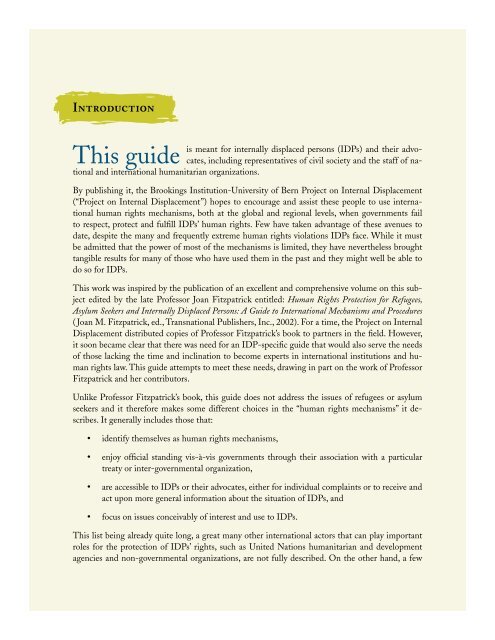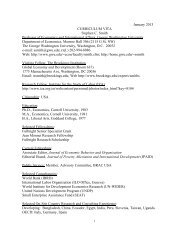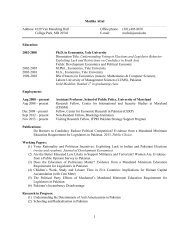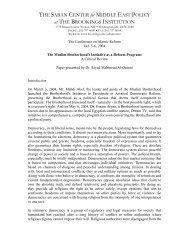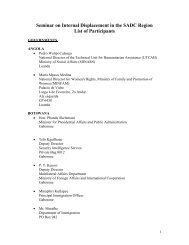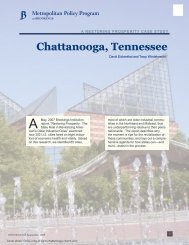Guide to International Human Rights Mechanisms - Brookings
Guide to International Human Rights Mechanisms - Brookings
Guide to International Human Rights Mechanisms - Brookings
You also want an ePaper? Increase the reach of your titles
YUMPU automatically turns print PDFs into web optimized ePapers that Google loves.
Introduction<br />
This guide<br />
is meant for internally displaced persons (IDPs) and their advocates,<br />
including representatives of civil society and the staff of national<br />
and international humanitarian organizations.<br />
By publishing it, the <strong>Brookings</strong> Institution-University of Bern Project on Internal Displacement<br />
(“Project on Internal Displacement”) hopes <strong>to</strong> encourage and assist these people <strong>to</strong> use international<br />
human rights mechanisms, both at the global and regional levels, when governments fail<br />
<strong>to</strong> respect, protect and fulfill IDPs’ human rights. Few have taken advantage of these avenues <strong>to</strong><br />
date, despite the many and frequently extreme human rights violations IDPs face. While it must<br />
be admitted that the power of most of the mechanisms is limited, they have nevertheless brought<br />
tangible results for many of those who have used them in the past and they might well be able <strong>to</strong><br />
do so for IDPs.<br />
This work was inspired by the publication of an excellent and comprehensive volume on this subject<br />
edited by the late Professor Joan Fitzpatrick entitled: <strong>Human</strong> <strong>Rights</strong> Protection for Refugees,<br />
Asylum Seekers and Internally Displaced Persons: A <strong>Guide</strong> <strong>to</strong> <strong>International</strong> <strong>Mechanisms</strong> and Procedures<br />
( Joan M. Fitzpatrick, ed., Transnational Publishers, Inc., 2002). For a time, the Project on Internal<br />
Displacement distributed copies of Professor Fitzpatrick’s book <strong>to</strong> partners in the field. However,<br />
it soon became clear that there was need for an IDP-specific guide that would also serve the needs<br />
of those lacking the time and inclination <strong>to</strong> become experts in international institutions and human<br />
rights law. This guide attempts <strong>to</strong> meet these needs, drawing in part on the work of Professor<br />
Fitzpatrick and her contribu<strong>to</strong>rs.<br />
Unlike Professor Fitzpatrick’s book, this guide does not address the issues of refugees or asylum<br />
seekers and it therefore makes some different choices in the “human rights mechanisms” it describes.<br />
It generally includes those that:<br />
• identify themselves as human rights mechanisms,<br />
• enjoy official standing vis-à-vis governments through their association with a particular<br />
treaty or inter-governmental organization,<br />
• are accessible <strong>to</strong> IDPs or their advocates, either for individual complaints or <strong>to</strong> receive and<br />
act upon more general information about the situation of IDPs, and<br />
• focus on issues conceivably of interest and use <strong>to</strong> IDPs.<br />
This list being already quite long, a great many other international ac<strong>to</strong>rs that can play important<br />
roles for the protection of IDPs’ rights, such as United Nations humanitarian and development<br />
agencies and non-governmental organizations, are not fully described. On the other hand, a few


